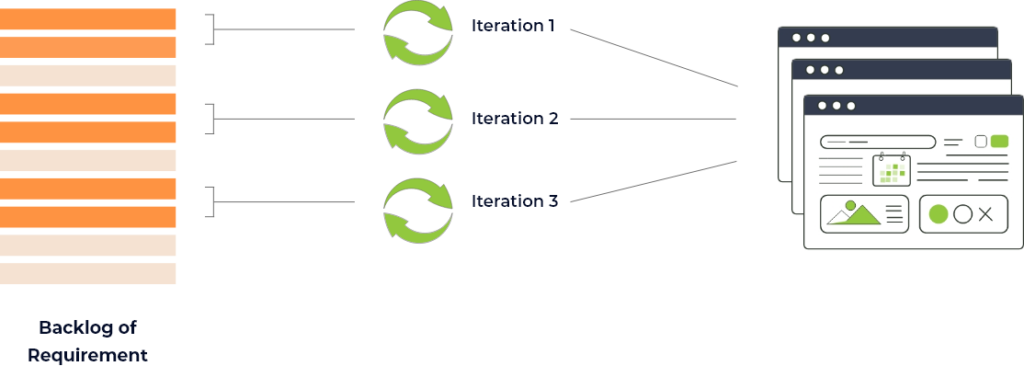Improve Time to Market with the Right Processes and Tools

While businesses are cranking up their digital transformation initiatives, their pace is seriously throttled by a shortage of developers. As a tech leader, your development team’s backlog keeps piling up with innovative ideas, feature requests, and critical issues, and getting new releases out to the hands of end-users continues to be a struggle.
At its bare-bones, it involves creating a culture that favors developers, adopting practices like Agile and DevOps, and using the right mix of tools that will grease the wheel to fast development and deployment.
This short guide aims to set you up on the path to rapid development so you can:
- Speed up your product or website releases
- Get what you need when you need it
- Reduce engineering costs and keep projects under budget
- Get more frequent feedback, innovate, and improve user-experience
- Get up to speed and beat your competition by capturing a larger market share
Table of Contents
- People: Fix People Problems Before Moving Up
- Processes: The Wrong Processes Increase Time to Market
- Tools: Automation Tools for Every Stage of the Development Lifecycle
People: Fix People Problems Before Moving Up
Before you fix your processes and use automation tools, it’s important to run a reality check to assess the health of your company culture. Run anonymous surveys to find out if your engineering team feels happy.
Your aim should be to create a culture that encourages open communication, teamwork, relationship building, and reduced silos. Since culture lies at the root, the first step should be to root out all people-problems before moving higher up to fixing processes and using tools.
Create a Favorable Culture
Create an integrative culture that values both people and performance. This ensures that both your people and product can thrive.
- Encourage teamwork
Collaboration, relationship building, and trust should form the core of your company culture. Have everyone in the team share responsibility and accountability. This leads to ideas flowing freely within the team and people accepting feedback from others more readily.
- Reduce silos
“It’s not my job” is something that no one on your team should utter. Instead of creating siloed teams for development, testing, and deployment, build a cross-functional team with complementary skill sets to support each product – all aligned with one goal of supporting a single application.
- Budget for Failure
Instead of avoiding failure, embrace it and view it as a positive sign of a culture that encourages risk. This way you can innovate and move quickly without fearing failure. You should also budget for errors and plan in advance how to recover in case of a big failure.
- Communicate Openly
Asking technical folks to communicate openly with each other, build relationships and trust is no small thing. But it has a huge impact on your company culture. Communication doesn’t necessarily mean endless meetings though. Encourage employees to communicate on their own terms using the tools they prefer.
Processes: The Wrong Processes Increase Time to Market
In 2006, the FBI decided to digitize their case files and related records so it would become easier for agents to compare cases and find connections between them. They hired a large development agency and planned a budget of $450 million for the project. To put it bluntly, there was neither developer shortage nor budget constraints for the project.
But the project ended up in an epic failure by 2010. The FBI had spent $400 million by then but only 2 out of 4 phases of the project had been delivered. Due to cost and timeline overages, the FBI decided to halt the work on the project.
However, the new FBI CTO who had recently joined the organization recommended a different approach to software development. He predicted that with the new approach, the project could be completed within the next 12 months in the remaining budget.
The predictions were spot-on. The FBI completed the last two phases of the project in less than a year for $30 million, with more than 90% cost savings.
That different approach was – you probably guessed it – AGILE. And the traditional approach that the FBI had been using earlier was WATERFALL.
Agile vs Waterfall
Let’s break agile vs waterfall into layman terms. Waterfall is a linear, step-by-step process while Agile is an iterative process.

In Waterfall, you complete one step and then proceed to the next. This process assumes that all your steps are clearly defined and are not subject to any change. It’s like following an instruction manual where the instructions and the steps outlined don’t change.
Unfortunately, Waterfall is rarely a success in software development because of so many unknown variables and changes in requirements that keep coming up. Final requirements are rarely known at the beginning of a project. New user stories keep springing up throughout the development lifecycle and the requirements keep changing. And so, when you don’t know what is required, how can you design a successful step-by-step process?
Agile, on the other hand, is an iterative process that accounts for continuous changes in requirements. Agile is based on observation rather than prediction. Instead of predicting what will be required, Agile development is informed by observation.
In Agile, the software is built iteratively. High-value requirements are chosen by project managers and a Minimum Viable Product is built and released to the end-users. Users give their feedback and inform the next phase of development.

In Agile, sprints of no more than 30 days are planned. This is the first iteration of the project. Requirements from the backlog are selected for the first sprint in such a way that a functional product can be shipped.
When feedback from end-users comes in and more variables become known, the backlog of requirements keeps growing. The next sprint is then planned in the same way. Each sprint causes an increment to the overall software we’re developing and the iterative process continues until we reach the final goal.
The most popular agile methodologies used today are Scrum and Kanban.
Here at Codup, we use a hybrid of both, dubbed as ScrumBan, to deliver projects on time and within budget, every time.
DevOps: The Next Step After Agile
While agile focuses on optimizing the development process, DevOps streamlines and reduces friction between Developers, QA engineers, and Operations folks.
Glossary:
Developers: People who write code and develop features
QA: People who test the code and find issues in it
Operations: People who deploy the software release so it’s available for end-users
If software development is a concert, Agile is the opening act and DevOps is the show’s main performer.
Stephen Fleming in his book, DevOps: Introduction to DevOps and its impact on Business Ecosystem
Both Agile practices and DevOps are necessary to ensure that your product is not only being built but is also deployed rapidly and gets in the hands of end-users for continuous feedback.
With DevOps practices, the success of a software project is not measured by delivering software that’s working – it’s measured by working software that’s already in the hands of the user. If the project got stuck in the deployment pipeline because of infrastructure issues, it isn’t yet successful.
DevOps can be adopted using the popular CALMS framework:
Culture: Creating a mindset and culture in which development and operations work more cohesively.
Automation: Using tools and automating processes to create velocity and eliminate waste.
Lean: Using continuous improvement and embracing failure so you can keep experimenting.
Measurement: Measuring results to continue innovating and improving processes.
Sharing: Sharing responsibility and accountability and considering it a group effort.

Tools: Automation Tools for Every Stage of the Development Lifecycle
Before we list down the tools, let’s put the old debate of process vs. tools to rest.
DECLARATION:
Processes won’t be productive without tools and tools won’t work properly without an effective process and a supportive culture. Using a tool to automate an error-riddled and failure-prone process will only lead you to fail more spectacularly.
Here are the recommended tools for every stage of the Development Lifecycle:
Planning
Confluence: For full-fledged project management
Jira: Issue tracking and Kanban Board
Slack: Team collaboration and communication
Building
Kubernetes/ Docker: For creating a virtual development environment
Bitbucket/Git: For managing different versions of code checked in by different developers
Chef/Puppet/Terraform: For configuration management
Testing
Water/Selenium/SauceLabs: For automated testing
Deployment
Bitbucket: For continuous integration and continuous deployment
Operations
AppDynamics: For monitoring the performance of your application
Jira: For incident and issue tracking
At Codup, we’ve been perfecting our culture and processes for the last 9 years and have managed to optimize our productivity and efficiencies. This allows us to consistently deliver projects on time and within budget, every time.
Want to discuss your project?
Visit https://codup.co and Schedule Free Consultation today.



